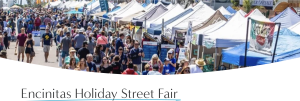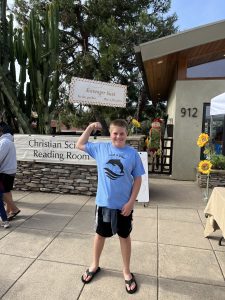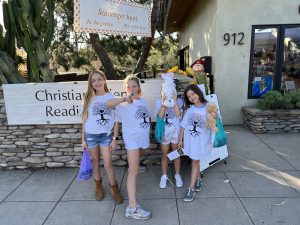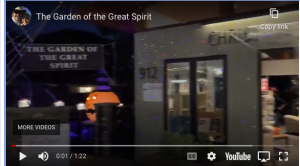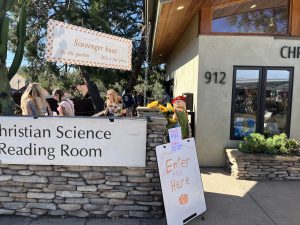From the January 1885 issue of The Christian Science Journal
This article was later republished in Miscellaneous Writings 1883-1896: Mis. 320:3-321:22
This interesting day, crowned with the history of Truth’s idea, its earthly advent and nativity, is especially dear to the heart of Christian Scientists, to whom Christ’s appearing in a fuller sense is so precious, and fraught with divine benedictions for mankind.
The star that looked lovingly down on the manger of our Lord, lends its resplendent light to this hour. The light of Truth to cheer, guide and bless man, as he reaches forth for the infant idea of divine perfection that dawns upon human imperfection, that chides man’s fear, bears his burdens, that beckons him on to Truth and Love, and the sweet immunity they bring from sin, sickness and death.
This polar star, fixed in the heavens of divine science, shall be the sign of his appearing who “Healeth all our diseases,” and it hath traversed night over to where the young child lies, wading through darkness and gloom, on to glory. It meets the antagonism of error, addressing to dull ears, and undisciplined beliefs, words of Truth and Life.
The star of Bethlehem is the star of Boston, high in the zenith of Truth’s domain, that looketh down on the long night of human beliefs to pierce the darkness, and melt into dawn.
The star of Bethlehem is the light of all ages; the light of Love, christening to-day religion, divine science, giving it a new name, and the white stone, a token of purity and permanence.
The wise men follow this guiding star; the watchful shepherd chants its welcome, and saith, at the cradle of a great Truth, “Unto us a child is born,” and his birth is less of a miracle than eighteen centuries ago, and “his name shall be called wonderful, the mighty counsellor, the everlasting Father, the Prince of Peace.”
It fills my heart with joy, that each receding year we see the steady gain of Truth’s idea in Christian Science; that each returning year the balance is adjusted more on the side of God, the supremacy of Spirit, the triumph of Truth over error, of health over sickness, Life over death, and of soul over sense.
“The time cometh, and now is, when they that worship the Father shall worship Him in Spirit and in Truth.” “For the law of the spirit of Life in Christ Jesus hath made me free from sin and death.” “Fear not, little flock, it is the Father’s good pleasure to give you the kingdom.”
“Press on, press on! ye sons of light,
Untiring in your holy fight,
Still treading each temptation down,
And battling for a brighter crown.”
You are invited to join us for our Sunday church service at the Reading Room in person or on zoom Sunday morning at 10 am PT. To let us know you are coming, please email us at christiansciencenote@gmail.com and we can send a link to our meeting. After church we have an open discussion about the week’s Bible lesson and/or testimonies of healing and comments and questions about Christian Science.
Phone (760) 753 4545
912 S. Coast Hwy. 101, Encinitas, CA 92024
If you would like to receive information from our Christian Science Society of Encinitas which includes notices about our events and services, please enter your email address to the right in the subscribe window. It is free, and you will then be sent an email to confirm your subscription.
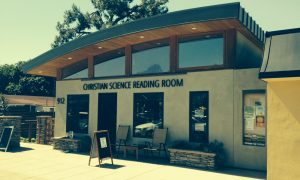
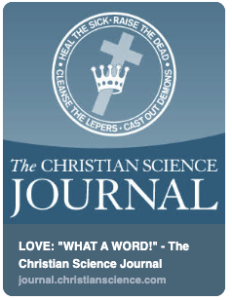
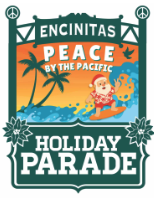
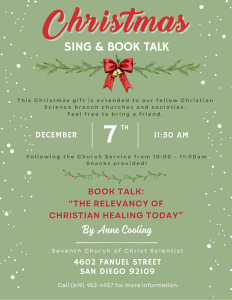


 Click below to join us live on Zoom:
Click below to join us live on Zoom: Thursday, December 4, 2025 – 6:00 PM Pacific
Thursday, December 4, 2025 – 6:00 PM Pacific
 Meeting ID: 811 8885 8472
Meeting ID: 811 8885 8472 Passcode: 047748
Passcode: 047748
 (760) 822-8123 |
(760) 822-8123 | 
